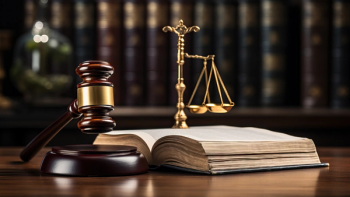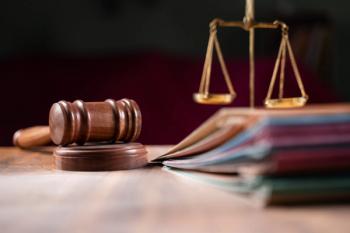
- Pharmaceutical Executive-08-01-2010
- Volume 0
- Issue 0
Patenting Diagnostics: Going Back to the Drawing Board
A recent Supreme Court decision leaves open the debate on patent eligibility requirements.
Intellectual property rights should provide predictability in protecting valuable knowledge assets from unauthorized commercial use. However, a number of recent court cases in the US cast doubt on that assertion, requiring pharma companies to adjust to growing uncertainty about what the law really says—particularly for new and emerging technologies like diagnostic methods.
The latest example is last month's Supreme Court decision, in Bilski v. Kappos, that many patent experts had hoped would resolve the question of what constitutes patentable subject matter for these new areas of discovery. The Court affirmed a decision of the US Federal Circuit Court of Appeals but criticized the rule that the Court applied, explaining that it feared automatic application of this rule "would create uncertainty as to the patentability of" several emerging technologies, including "advanced diagnostic medicine techniques." The end result is that the Federal Circuit will have to decide these issues on a case-by-case basis.
Insight into how the courts will apply the patent eligibility requirement to medical diagnostics can be found through examination of other cases. The day after the Supreme Court issued its Bilski decision, it vacated another decision by the Federal Circuit, Prometheus Laboratories Inc. v. Mayo Collaborative Services, and remanded it for further consideration by the lower courts in light of Bilski. Prometheus has a patent covering a medical diagnostic method for determining the appropriate dose of thiopurine, a pre-existing treatment for some gastrointestinal and autoimmune diseases. One representative claim requires measuring a known thiopurine metabolite in a patient who had been administered the drug, "wherein the level" of the metabolite "indicates a need" to modify the amount of thiopurine. Mayo successfully argued to the district court that the patent was invalid for failing to claim patentable subject matter because it attempted to claim an abstract idea—the correlation between thiopurine drug metabolite levels and appropriate dosing levels.
The Federal Circuit reversed the district court after applying its "definitive test" for determining if a process claim covers patentable subject matter. It had articulated that test in its Bilski decision, which the Supreme Court, by modifying the Federal Circuit's reasoning, has now eliminated as a universal requirement. According to that test, a claimed process "is surely patent-eligible" if it is tied to a particular machine or transforms an article into a different substance . However, "'the use of a specific machine or transformation of an article must impose meaningful limits on the claim's scope to impart patent-eligibility"' and "'the involvement of the machine or transformation in the claimed process must not merely be a insignificant extra-solution activity.'" Although the Supreme Court in Bilski ruled that this "machine-or-transformation test is not the sole test for deciding whether an invention is a patent-eligible 'process,'" it still left the test intact but only as one way to analyze the question of patentable subject matter. It explained that "the machine-or-transformation test is a useful and important clue, an investigative tool, for determining whether some claimed inventions are processes under [the law]." Hence despite the Supreme Court's vacating of the Prometheus decision, the "machine-or-transformation test" remains a valid tool for determining patent eligibility.
It is worthwhile to look at how the Prometheus ruling applied the machine-or-transformation test to the patented diagnostic technique for determining an appropriate dose for thiopurine. The court found the claims satisfied its test by constituting a transformation. It stated: "The transformation is of the human body following administration of a drug and the various chemical and physical changes of the drug's metabolites that enable their concentrations to be determined." Measuring the level of the metabolites "is also transformative" because the levels "cannot be determined by mere inspection" and require "some form of manipulation, such as ... high-pressure liquid chromatography." The court also stated that one "further requirement" must be met: The transformation requirement cannot be satisfied by "merely insignificant extra-solution activity." The court found the transformation required by Prometheus's patent was central to the claims because they "are part of treatment regimes for various diseases using thiopurine drugs." Whether anything other than a mere visual inspection of the patient would fail to qualify under the machine-or-transformation test remains to be seen.
One curious aspect of the Prometheus decision is that all of the steps in the claims, up until the final required mental step of "determining" to adjust the dose, appear to be in the prior category and are thus valid, according to the court's opinion. Prior to the issuance of the Prometheus patent, according to the decision, doctors administered thiopurine to patients at various doses and knew of techniques to measure the metabolites, even if they did not yet know how to correlate them with dosing. Now, those same doctors for all practical purposes cannot measure thiopurine metabolite levels without risking infringement—even if they never adjust the dose—because unless they are ill-informed of the literature, it may be impossible for them not to draw the mental conclusion that a different dose would be appropriate.
The challenge for companies moving forward is the number of hurdles that still must be breached to ensure certainty in fixing the patent eligibility of critical new technologies like diagnostics. These include three sizable ifs: if the Federal Circuit reaches the same conclusion in Prometheus upon remand from the Supreme Court in light of Bilski, which is possible because the machine-or-transformation test is still a "useful tool;" if the Supreme Court's three dissenters in a previous case, Labcorp v Metabolite Laboratories, never persuade a majority of the Supreme Court to adopt their views; and if subsequent Federal Circuit decisions follow the Prometheus decision. Only then will companies be able to take comfort in knowing that patentable subject matter is applied broadly to diagnostic techniques and be able to determine in the future which diagnostic methods are most likely to be eligible for patent protection.
Daniel Reisner Daniel Reisner is a partner at the law firm Kaye Scholer based in New York. He can be reached at
Articles in this issue
over 15 years ago
Mr. Quality Goes to Washingtonover 15 years ago
Learning to Weather a Stormover 15 years ago
What Pharma Needs to Know About M-Healthover 15 years ago
Strategies for Emerging Markets: Seven Keys to the KingdomNewsletter
Lead with insight with the Pharmaceutical Executive newsletter, featuring strategic analysis, leadership trends, and market intelligence for biopharma decision-makers.




